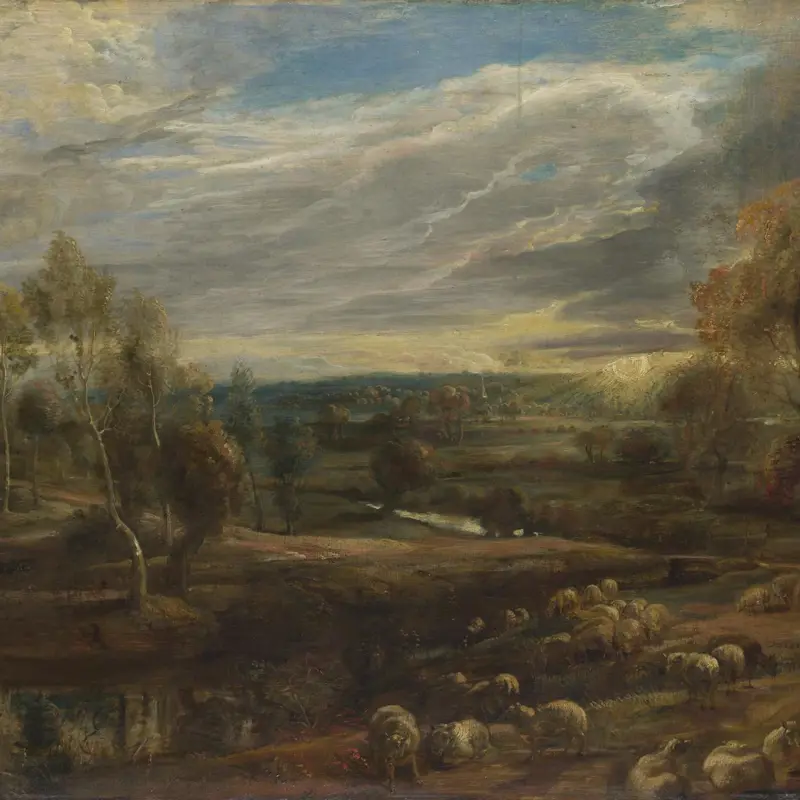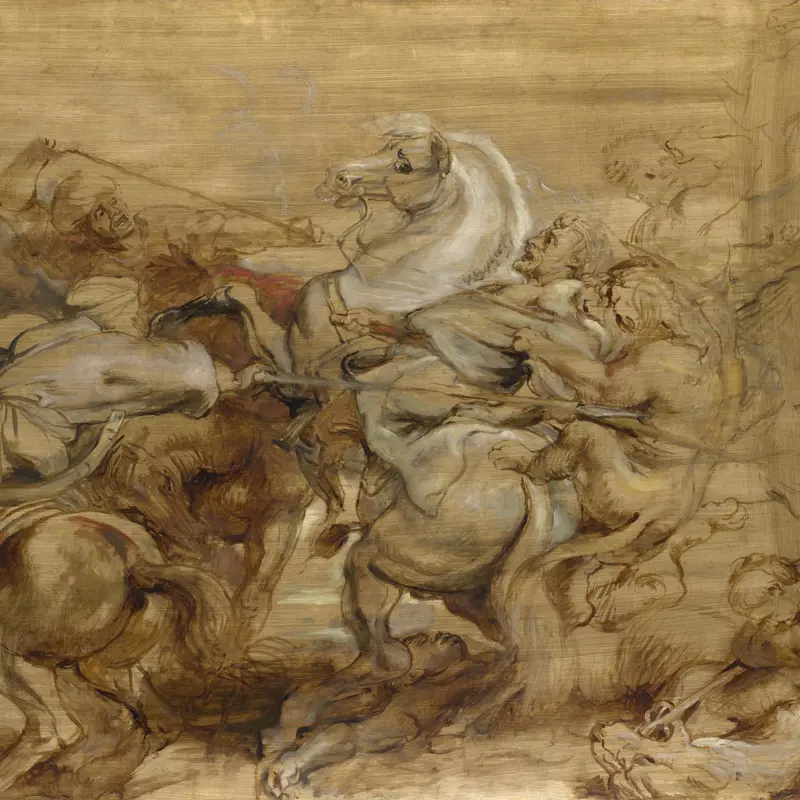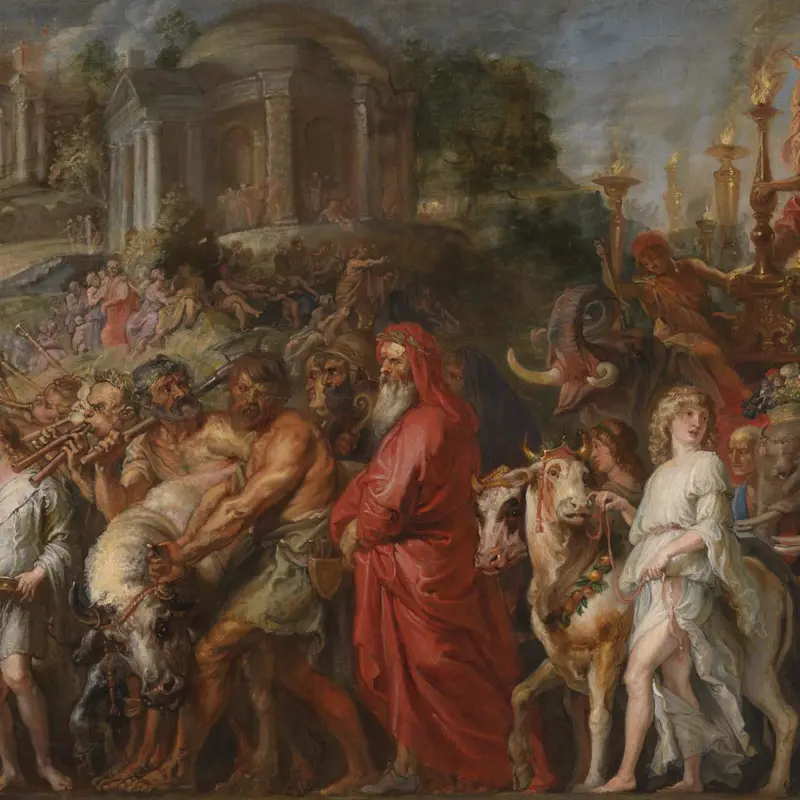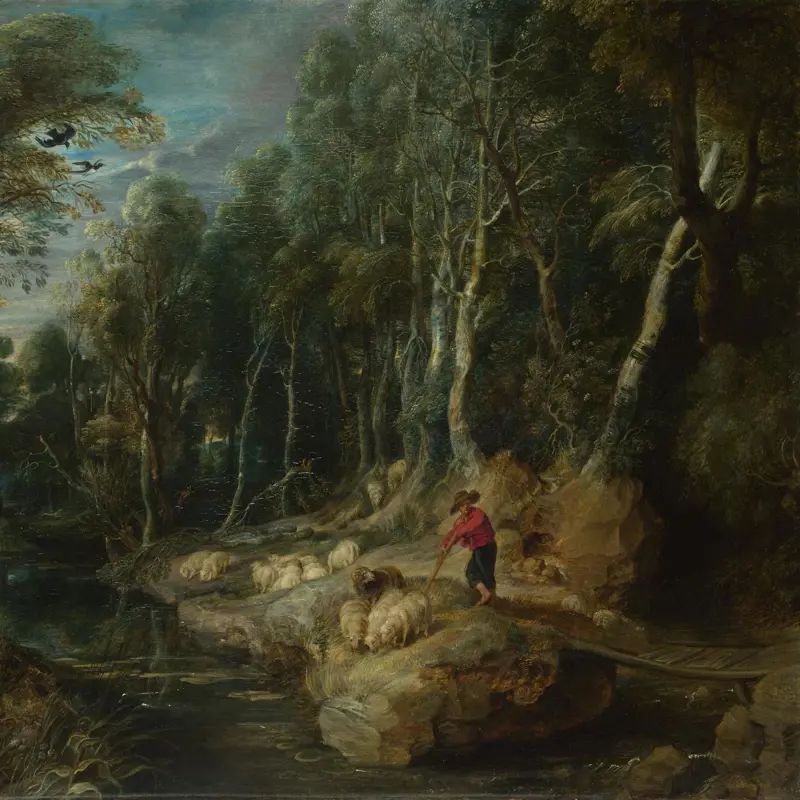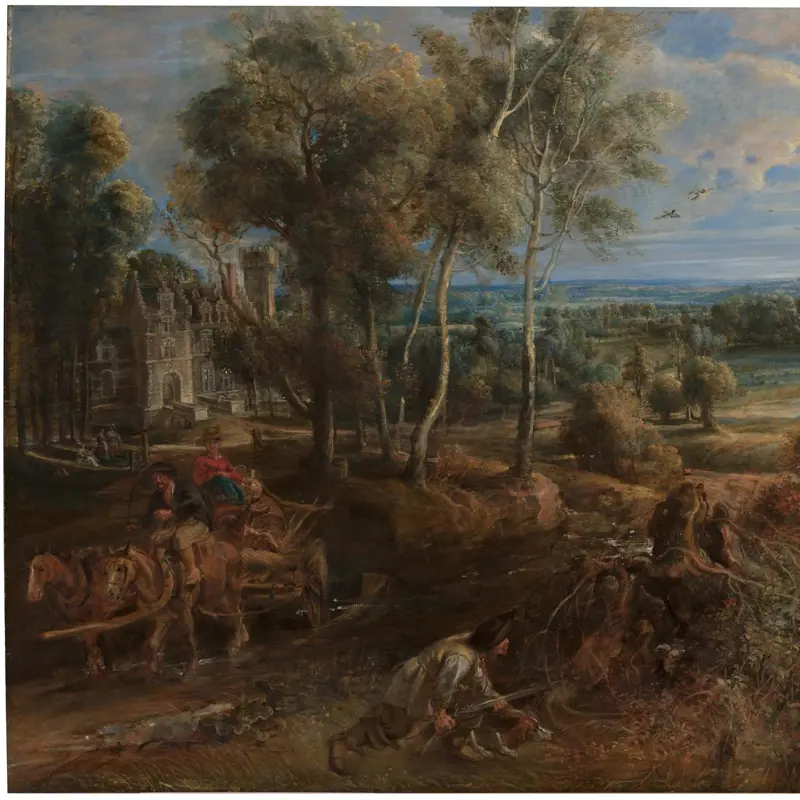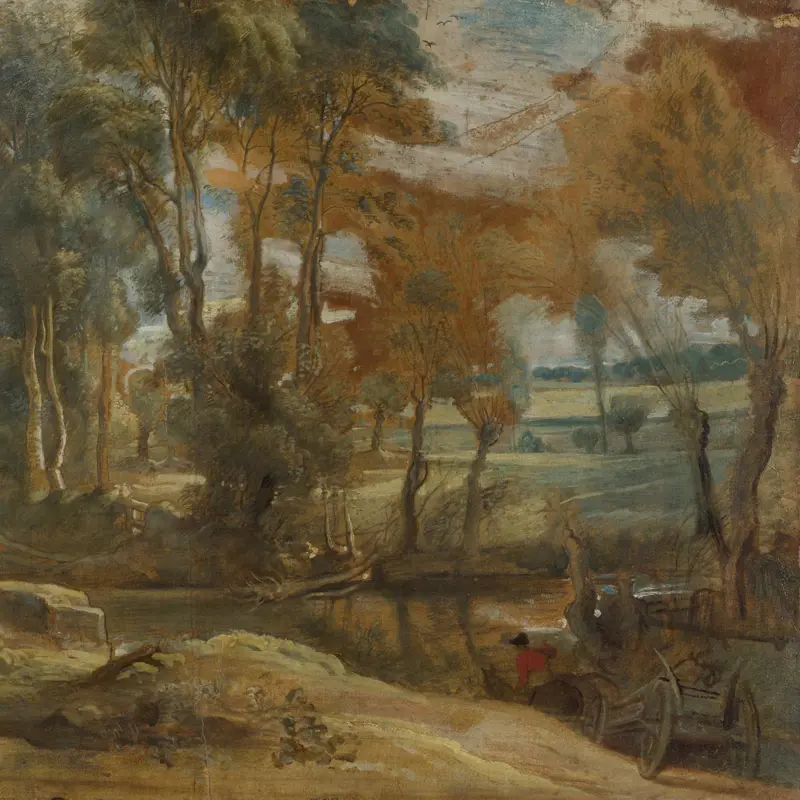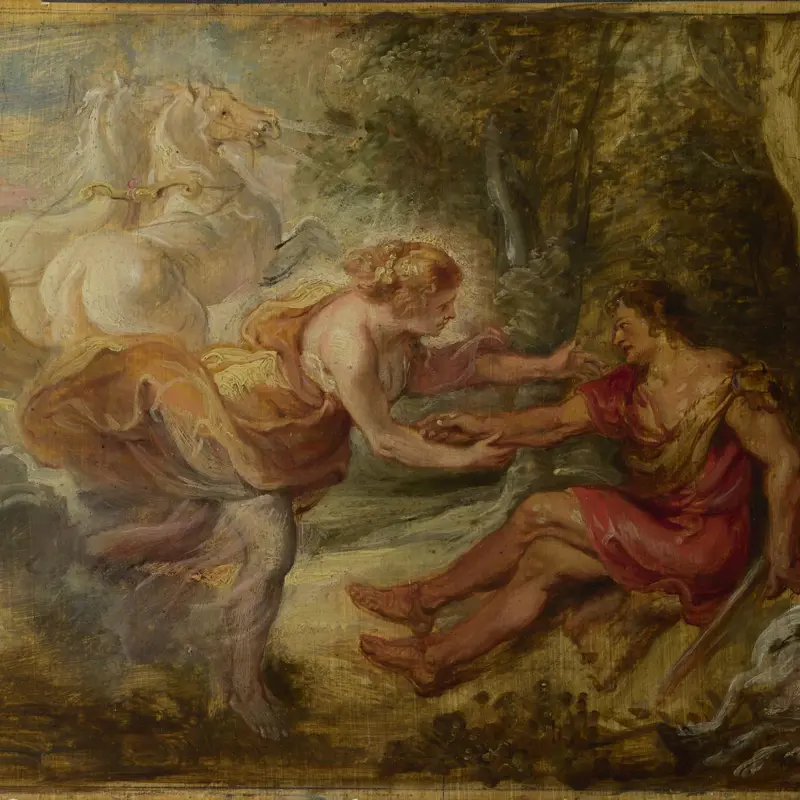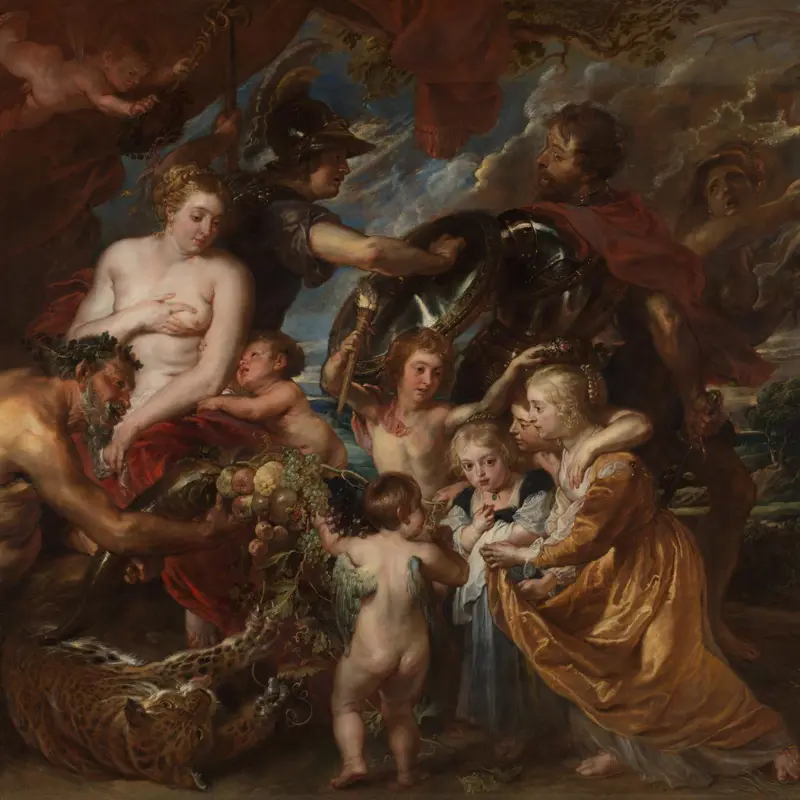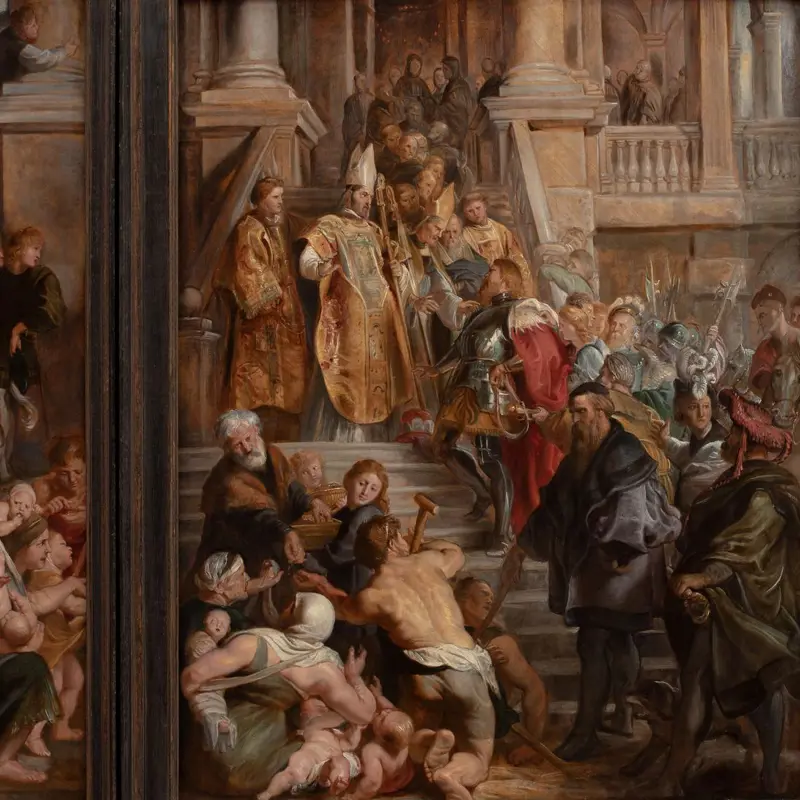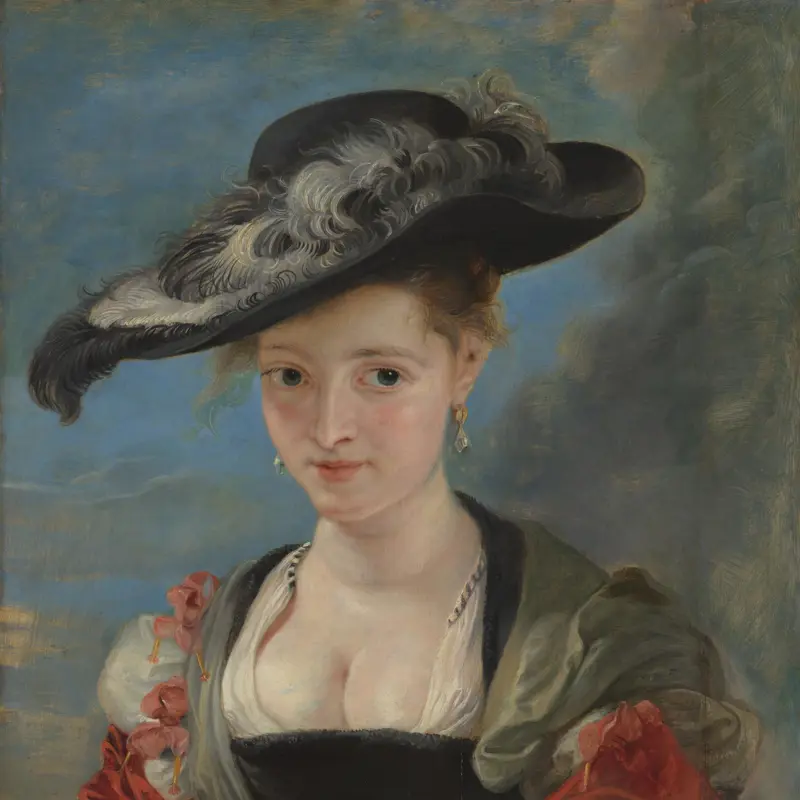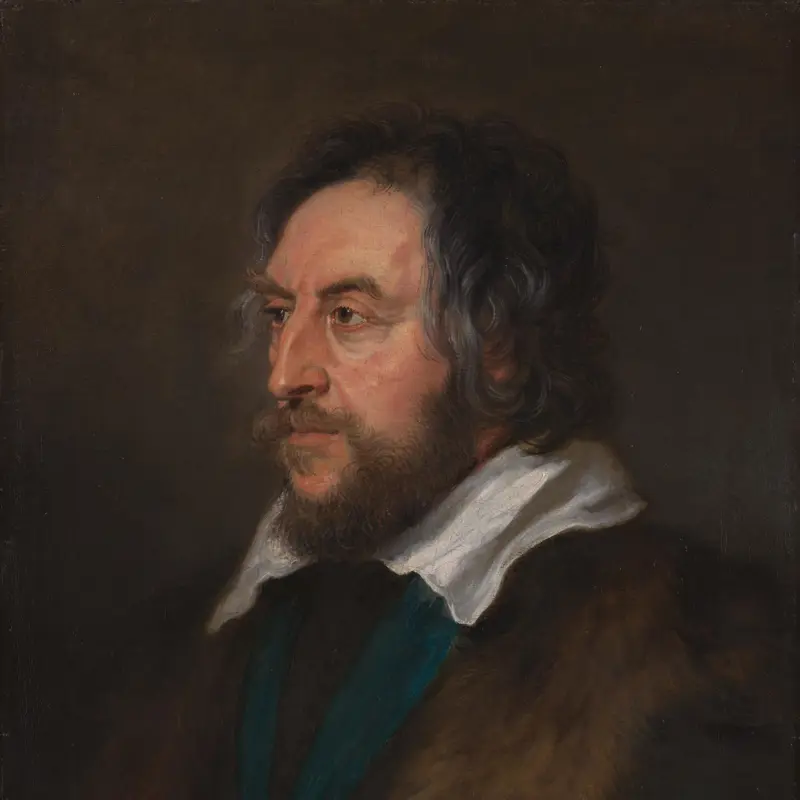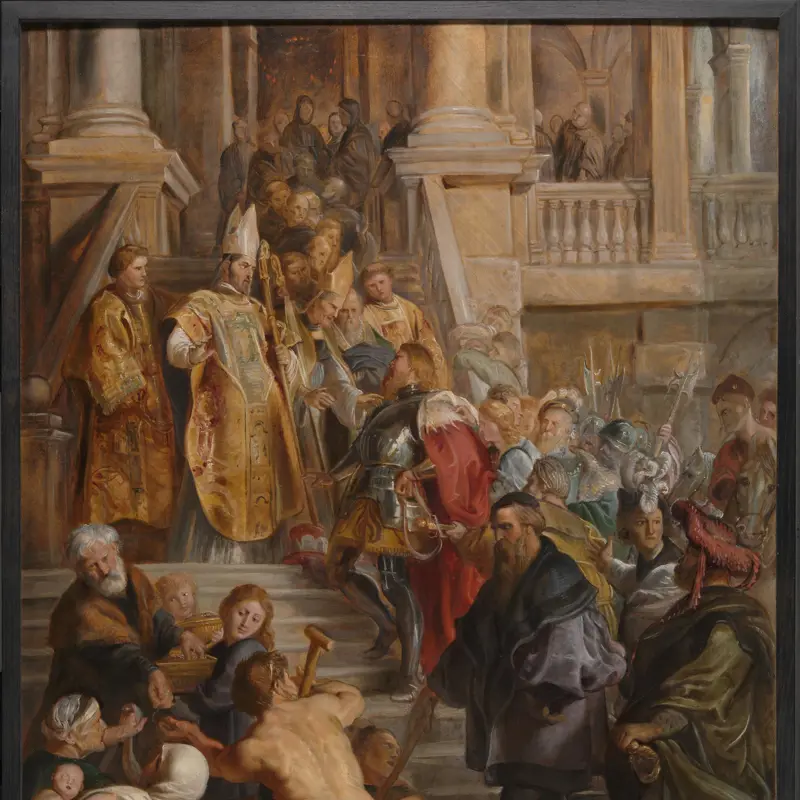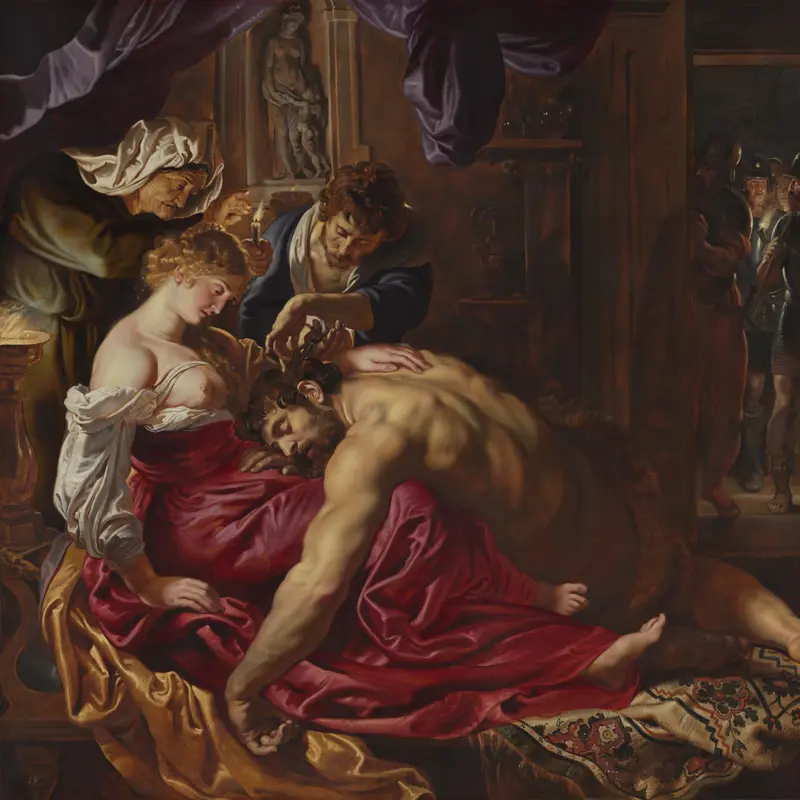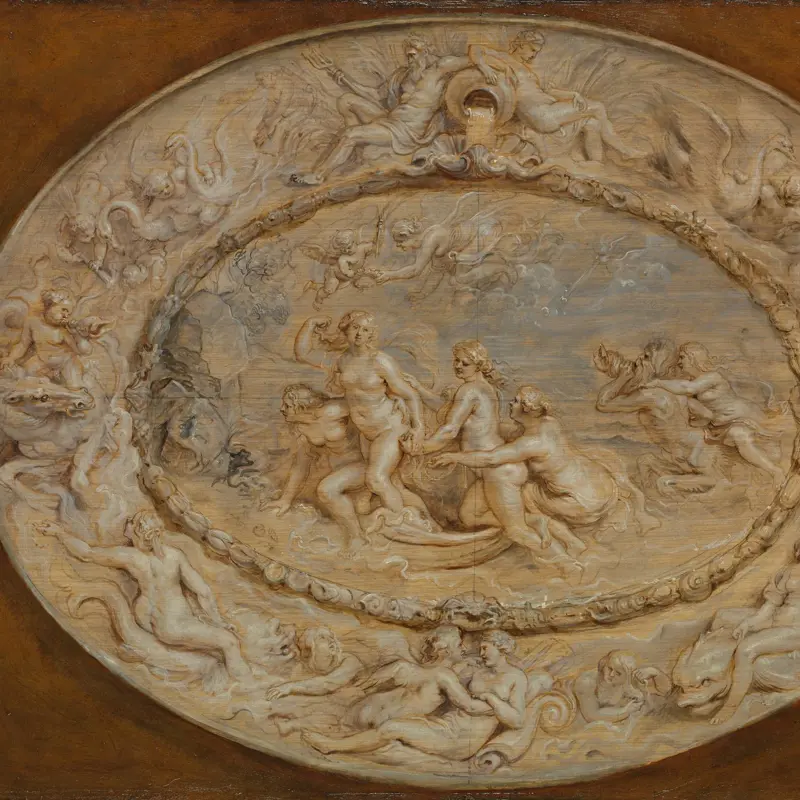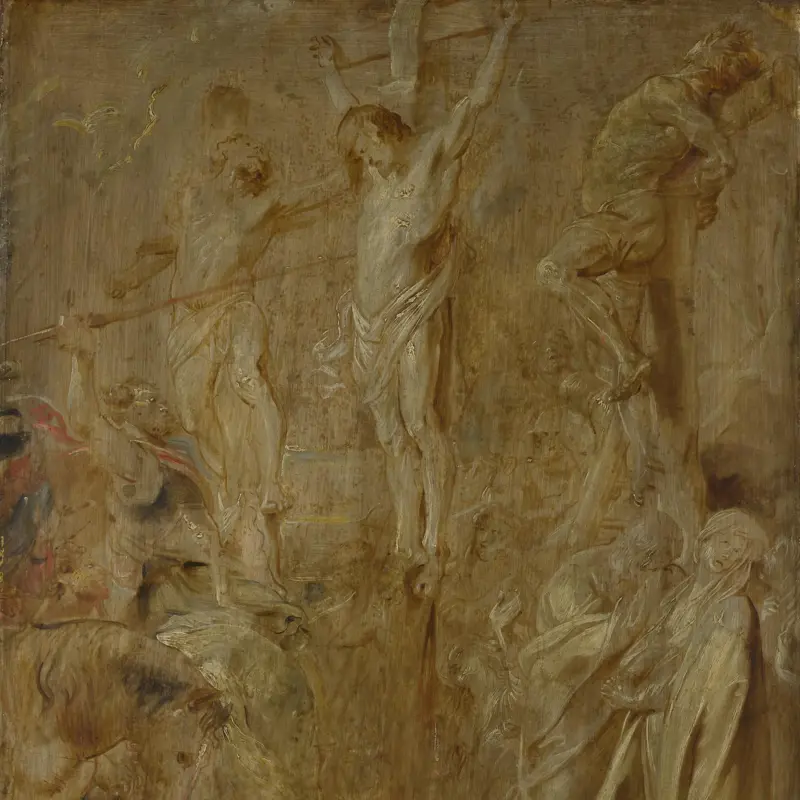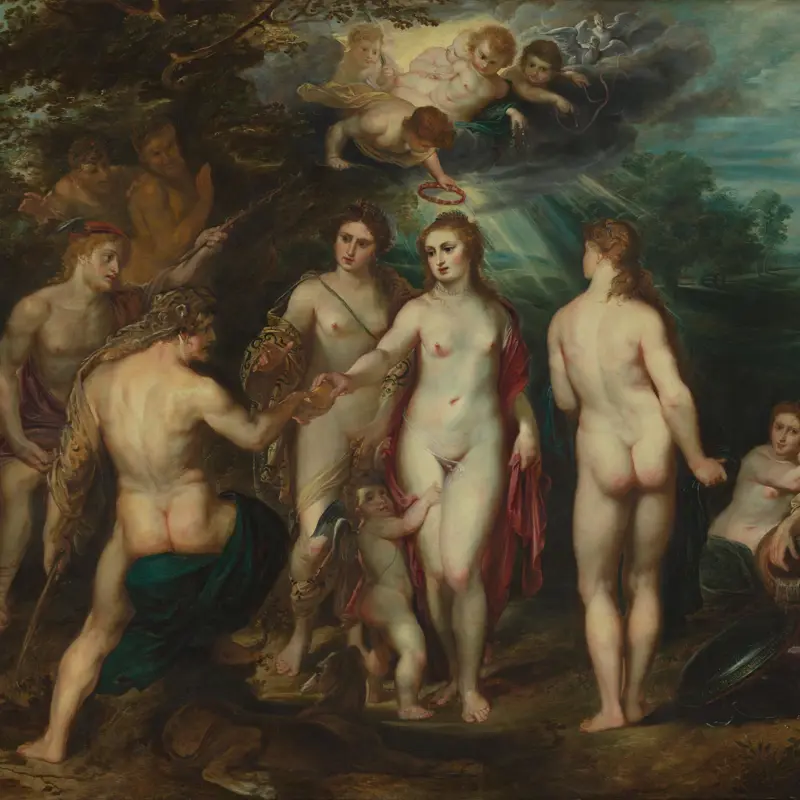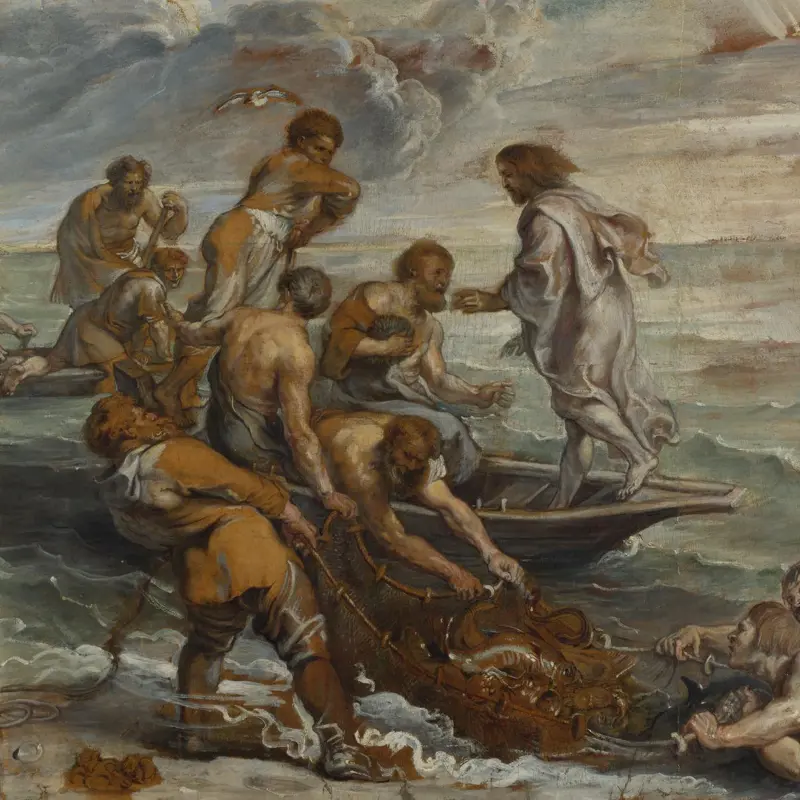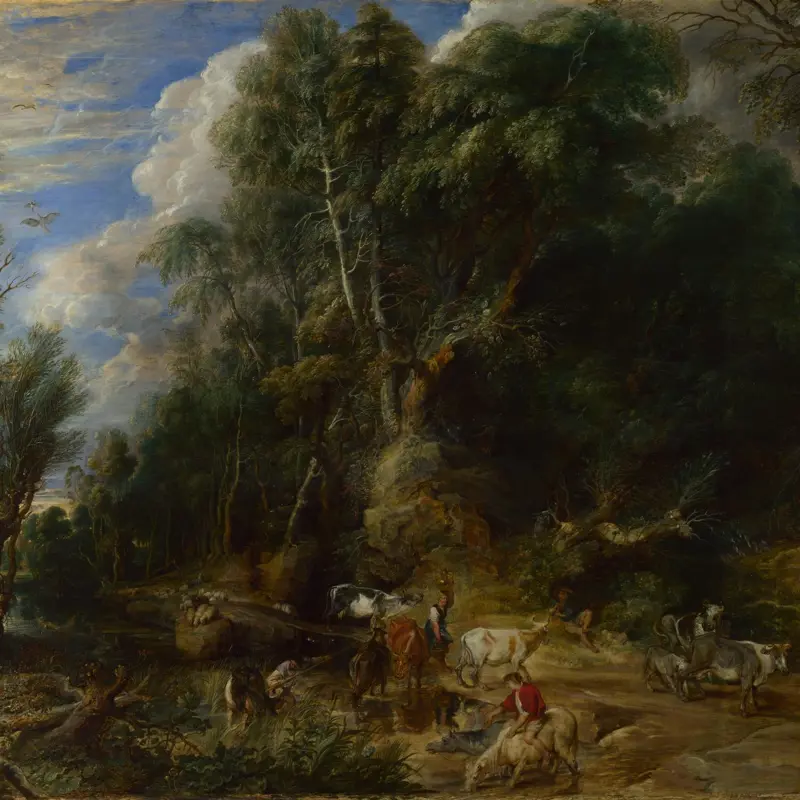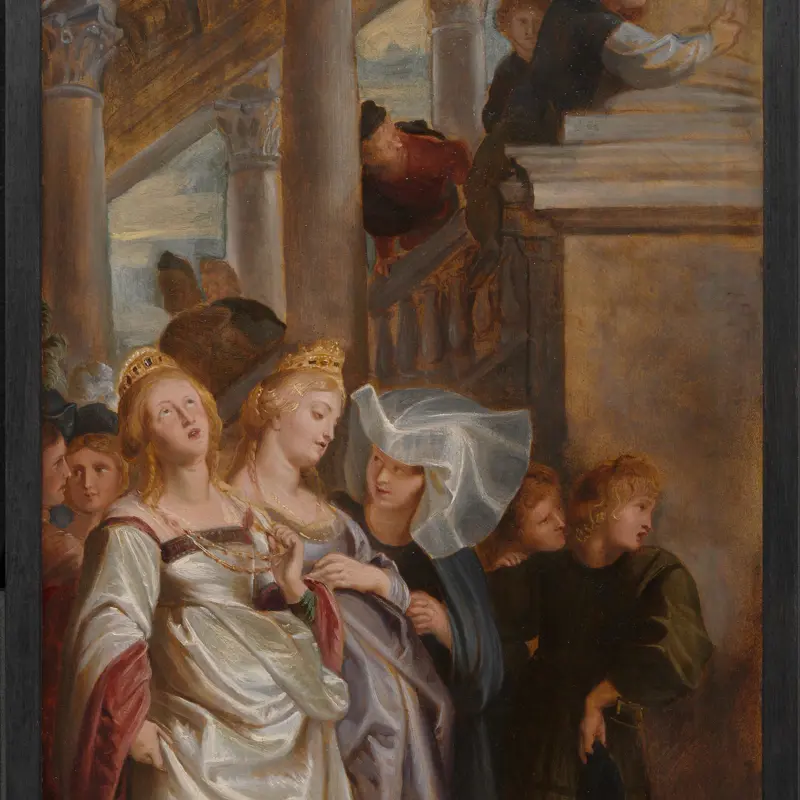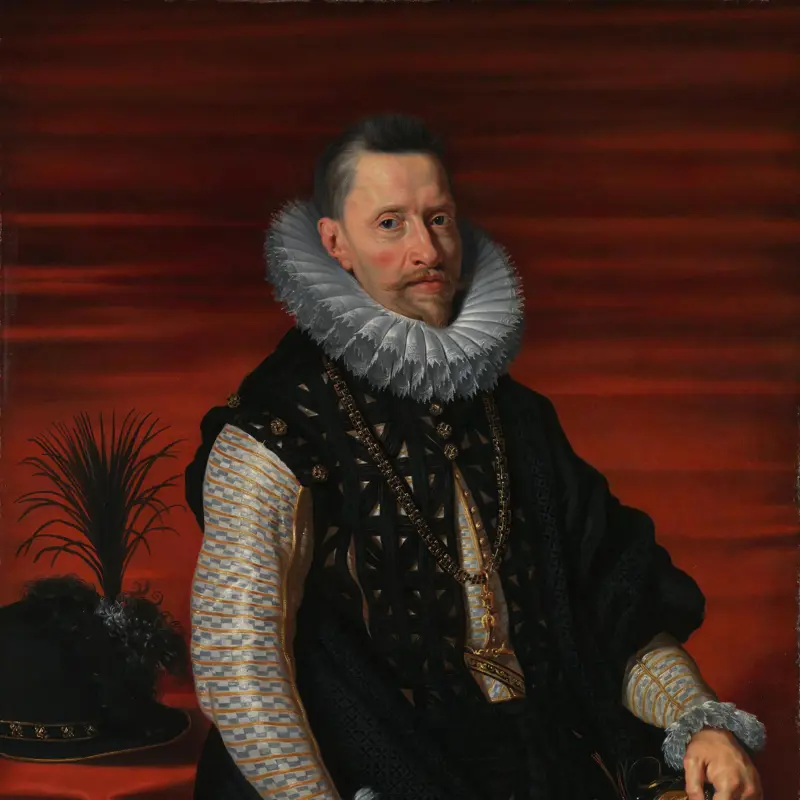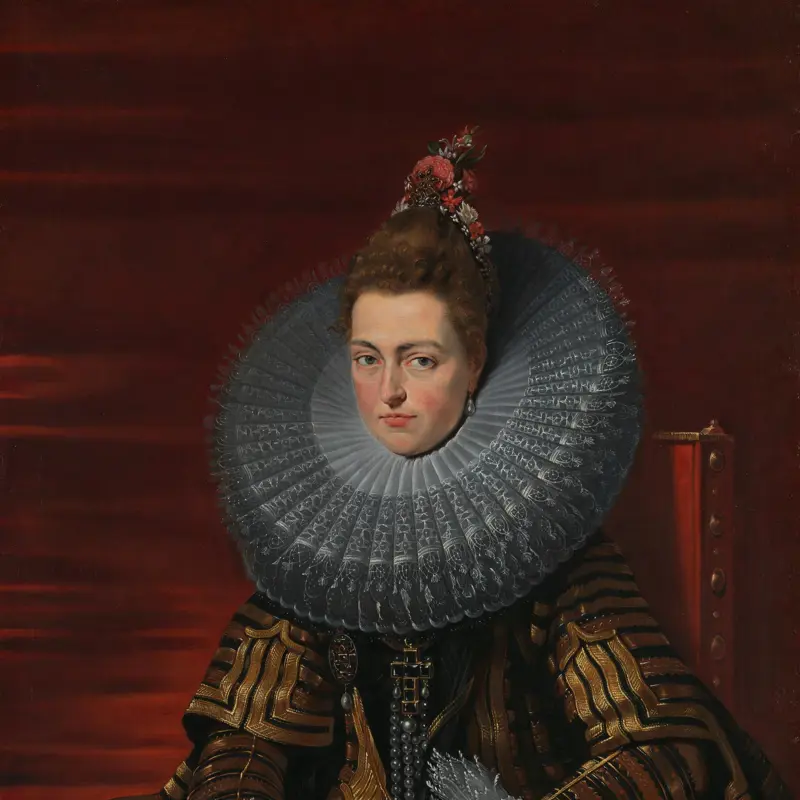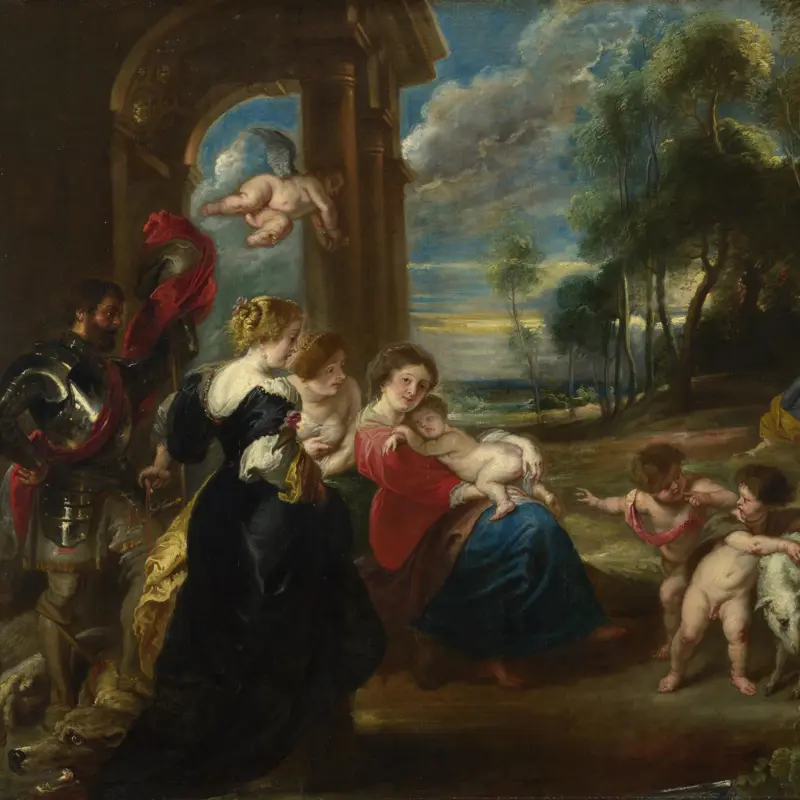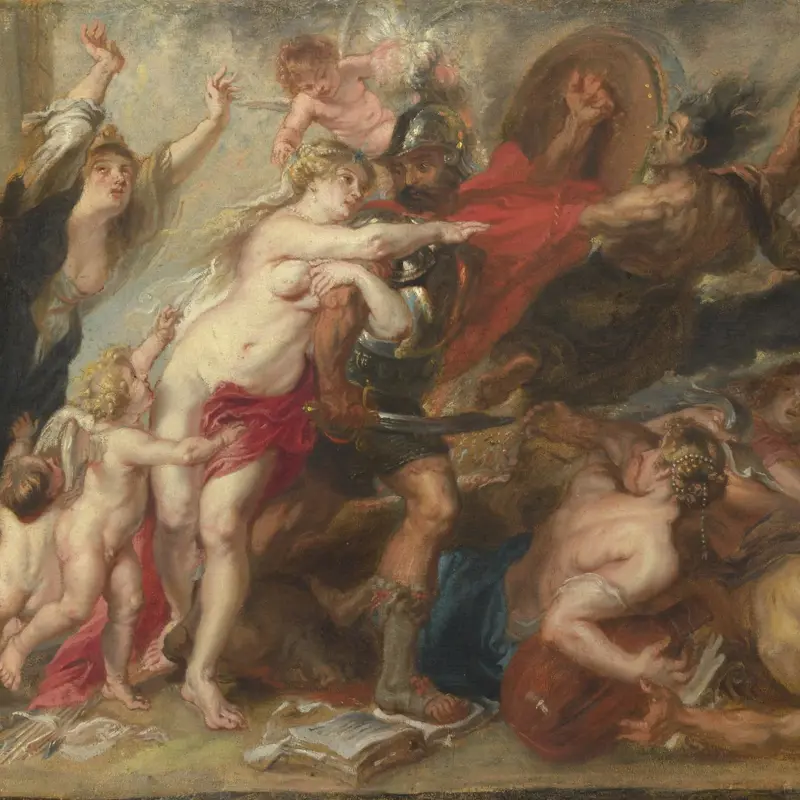Peter Paul Rubens, 'Portrait of Ludovicus Nonnius', about 1630-2
About the work
Overview
The aged antiquarian and doctor Ludovicus Nonnius meets our gaze with watery eyes. With his slightly parted lips, he appears to engage us in discussing a passage from the book he holds, which is most likely his recently published text, Diaeteticon sive de recibaria, Libri IV. In this he argues for the importance of diet, his research based on the eating habits of the ancient Romans.
Nonnius was a friend of Rubens in Antwerp, and the artist shows his respect for the old scholar by painting him in fine clothing, seated in a stately chair and framed by grand classical architecture. The bust is identified in Greek lettering as Hippocrates (around 460–around 370 BC), the founder of medicine and a respected forebear of Nonnius in terms of his medical and classical learning. The books on the ledge emphasise the scholarly achievements of the sitter; the cover ties of two hang undone, suggesting that he has recently consulted them.
Key facts
Details
- Full title
- Portrait of Ludovicus Nonnius
- Artist
- Peter Paul Rubens
- Artist dates
- 1577 - 1640
- Date made
- About 1630-2
- Medium and support
- Oil on wood
- Dimensions
- 124.4 × 92.2 cm
- Acquisition credit
- Bought, 1970
- Inventory number
- NG6393
- Location
- Room 18
- Collection
- Main Collection
- Frame
- 18th-century English Frame
Provenance
Additional information
Text extracted from the National Gallery’s Annual Report, ‘The National Gallery: January 1969 – December 1970’.
Exhibition history
-
2017Rubens and RembrandtThe National Gallery (London)22 March 2017 - 6 August 2017
-
2023The Touch of Pygmalion. Rubens and Sculpture in RomeMuseo e Galleria Borghese14 November 2023 - 18 February 2024
Bibliography
-
1909A Catalogue of the Pictures and Drawings in the National Loan Exhibition, in Aid of the National Gallery Funds, held in the Grafton Galleries, London 1909
-
1909M.W. Brockwell, 'A Long-Lost Portrait by Rubens', The Athenaeum, 4283, 1909, p. 666
-
1910O. von Schleinitz, 'Londoner Brief', Kunstchronik, XXI/15, 14 February 1910, pp. 241-7
-
1921A. Rosenberg, P. P. Rubens: Des Meisters Gemälde in 538 Abbildungen, ed. R. Oldenbourg, 4th edn, Stuttgart 1921
-
1938Catalogue of the Exhibition of 17th Century Art in Europe, London 1938
-
1950L. Burchard, A Loan Exhibition of Works by Peter Paul Rubens: Held under the Auspices of the Royal Empire Society, in Aid of the Lord Mayor's National Thanksgiving Fund, London 1950
-
1951C. Norris, 'Rubens in Retrospect', The Burlington Magazine, XCIII/574, 1951, pp. 2-11
-
1969J. Held, 'Rembrandt's "Aristotle": The Iconographic Type', in J. Held, Rembrandt's "Aristotle" and other Studies, Princeton 1969, pp. 21-29
-
1970F. Baudouin, 'Geneesheren in Rubens' omgeving', Liber Memorialis, Collegium Medicum Antuerpiense, CCCL/25, 1970, pp. 55-75
-
1971The National Gallery, The National Gallery: January 1969 - December 1970, London 1971
-
1972J.R. Martin, The Decorations for the Pompa Introitus Ferdinandi, London 1972
-
1973W. Prinz, 'The Four Philosophers by Rubens and the Pseudo-Seneca in Seventeenth-Century Painting', Art Bulletin, LV/3, 1973, pp. 410-28
-
1978J.R. Judson and C. van de Velde, Book Illustrations and Title Pages, vol. 1, London 1978
-
1979A. Braham, Rubens, Themes and Painters in the National Gallery 8, London 1979
-
1981D. Sutton, '[Aspects of British collecting: Part] II: London as an Art Centre', Apollo, CXIV, 1981, pp. 298-312
-
1981H. Vlieghe, 'Rubens und seine Auftraggeber nach der Rückkehr in Antwerpen', in J.G. van Gelder, J. Held and H. Kauffmann, Peter Paul Rubens: Werk und Nachruhm, Munich 1981, pp. 137-55
-
1984L.J. Bruce-Chwatt, 'Ludovicus Nonnius, M.D., 1553-1645', Bulletin of the New York Academy of Medicine, LX/9, 1984, pp. 938-43
-
1986Martin, Gregory, National Gallery Catalogues: The Flemish School, circa 1600 - circa 1900, London 1986
-
1986J.R. Martin, 'Portraits of Doctors by Rembrandt and Rubens', Proceedings of the American Philosophical Society, CXXX/1, 1986, pp. 7-20
-
1987C. Brown, The National Gallery Schools of Painting: Flemish Paintings, London 1987
-
1987H. Vlieghe, Rubens Portraits of Identified Sitters Painted in Antwerp, London 1987
-
1989M. Jaffé, Rubens: Catalogo completo, Milan 1989
-
1989C. Scribner, Peter Paul Rubens, New York 1989
-
1996F. Portier, 'Prices Paid for Italian Pictures in the Stuart Age', Journal of the History of Collections, VIII/1, 1996, pp. 53-69
-
1997P. Kathke, Porträt und Accessoire: Eine Bildnisform im 16. Jahrhundert, Berlin 1997
-
2001
C. Baker and T. Henry, The National Gallery: Complete Illustrated Catalogue, London 2001
-
2003K. Bomford, 'Peter Paul Rubens and the Value of Friendship', Nederlands Kunsthistorisch Jaarboek, LIV, 2003, pp. 229-57
-
2004A. Brejon de Lavergnée, Rubens (exh. cat., Palais des Beaux-Arts, Lille), Paris 2004
-
2004A. Brejon de Lavergnée, Rubens (exh. cat. Palais des Beaux-Arts, Lille, 6 March - 14 June 2004), Lille 2004
-
2010M. Romano, 'Rubens e l'erma ritratto di Ippocrate: La memoria dell'antico in un ritratto di Ludovicus Nonnius', Journal of the History of Collections, XXII/1, 2010, pp. 15-27
-
2011G. Martin, Rubens in London: Art and Diplomacy, London 2011
About this record
If you know more about this work or have spotted an error, please contact us. Please note that exhibition histories are listed from 2009 onwards. Bibliographies may not be complete; more comprehensive information is available in the National Gallery Library.

